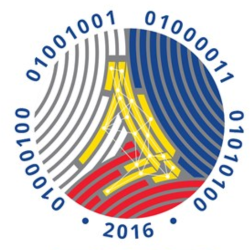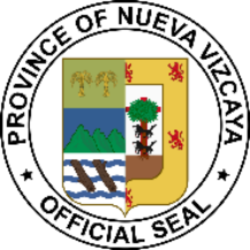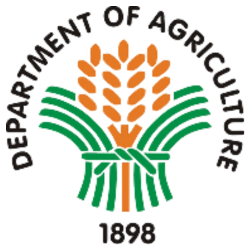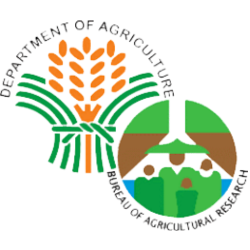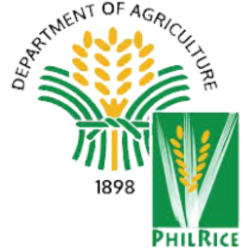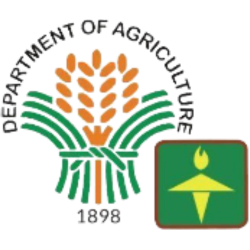The Price and Cost Structure of the Pineapple Industry in Nueva Vizcaya: 2015 Value Chain Study
This value chain (VC) study presents the price and cost structure of the pineapple industry in Nueva Vizcaya, Philippines. It gives emphasis on the value created by key players in each segment. It was conducted among farmers, traders, processors, and stakeholders of the top three producing municipalities in the province. The producer respondents were selected using stratified random sampling while traders and processors were completely enumerated. Results were established through validating the survey with key informants, and eventually were analyzed using the value chain framework. Seemingly, the ‘’pineapple processing’’ segment can best create the best value; however, activities were irregular which is similar to the retail value chain. The ‘’trading’’ segment regularly performed by brokers created the most value, next to the production chain. Finally, gaps in the industry commands the strong commitments of the enabling stakeholders to improve and promote investments. Policy implications such as the support of the local government units to include pineapples in their priority crops. The results can likewise serve as a basis for identifying commodity investment priorities in the province.
Keywords: key players, Nueva Vizcaya Pineapples Philippines, value chains analysis
Citation (APA): Lacaden, C. C. (2016). The Price and cost structure of the pineapple industry in nueva vizcaya: 2015 value chain study. NVSU Research Journal, 3(1), 5-16.
Characterizing the Water Quality of the Cagayan River: Basis for Community Action Programs Toward Prevention of Water Pollution
The study assessed the water quality of the Cagayan River as characterized by physical and chemical parameters to provide baseline information for the local government to implement stricter measures on wastewater management and in order to prevent remarkable contamination of the renowned longest river in the country. The grab method of specimen sampling was used in different stations with three strata. The obtained results of the physical and chemical properties of the river were compared to water quality standards set by the Bureau of Fisheries and Aquatic Resources (BFAR) and the Department of Environment and Natural Resources (DENR). The assessment showed that the Cagayan River in the study site is contaminated with ammonia that is remarkably high and denotes high level of nutrients from wastewater disposed into the river. Anthropogenic activities largely contribute to the change of river water quality. Hence, the study site is predisposed to pollution. Local dwellers and agencies in different sectors advocating care for the environment are encouraged to take aggressive actions to minimize the direct inflow of wastewater into the river in order to control the increasing nutrient deposition that will bring a subsequent death of a river.
Keywords: pollution, river, wastewater, water quality
Citation (APA): Cabansag, M. G. S. (2016). Characterizing the water quality of the Cagayan river: Basis for community action programs toward prevention of water pollution. NVSU Research Journal, 3(1), 17-27.
A Portable Solar-powered Generating Apparatus for Irrigation System of Small Scale Farming “tubig at Ilaw Mula Sa Araw”
This study was concentrated on the performance of a portable solar-powered apparatus for water pumping systems intended for small irrigation, safe drinking water, sanitation water supply, and wide variety of lighting, ventilating and charging applications. This is a 4 in 1 apparatus which answers to the biggest challenge facing the world today which is Energy Independence and Food Production (EIFP). The project was evaluated along design, construction, efficiency, acceptability, functionality, affordability and safety.
The Project Development Method (PDM) was used in making the project. The descriptive-evaluative research design was applied to test its performance. There were one 140 respondents of the study. The five-point Likert’s Scale and WAM were applied to interpret the equivalent meanings of the data gathered. Likewise, the ANOVA was used to determine the significant difference between the responses of the four groups of respondents.
The findings revealed that the apparatus gave an “excellent” performance. It has a good design, constructed properly, efficient, highly acceptable, functional, affordable to own and very safety to use.
It can satisfactorily produce a volume of 600 m3 (159,600 US-Gal. /day), /day of water at a lift of 15 meters (46 ft.). The Evapo-Transpiration (ETo) is 5.5 mm/day. The irrigation efficiency is 65 % and the irrigation area is 7.1 ha (28.7 acres). It can efficiently run a 1 HP (750W) submersible pump with 2,500 liter/hour. The maximum jet of water is 20 meters. The total savings after 60 months is Php 109,800.00. The apparatus is economical, affordable, and technically practical.
Keywords: battery charging, construct, design, evaluate, irrigation system, lighting, solar-powered, ventilating
Citation (APA): Seguban, R. G., Seguban, J. C. M., Orperia, F. O., Simon, A. R., & Bumagat, E. M. (2016). A portable solar-powered generating apparatus for irrigation system of small scale farming “tubig at ilaw mula sa araw”. NVSU Research Journal, 3(1), 28-39.
Cognitive Test Construction Skills of Prospective Teachers: Ensuring Quality Student Learning Outcomes
The success of a learning community lies on how the students may benefit from the curriculum which is fundamentally anchored on constellation of human needs. This study delved on the cognitive test construction skills of prospective teachers in a state university of Cagayan Valley who will eventually partake enormously in such success through assessment. Through a writing simulative activity, the level of cognitive test construction skills of 103 randomly selected respondents are unveiled to be high along multiple choice, matching, alternate response, and simple recall types, however average in completion and essay types. Further, their level of proficiency in establishing general validity and usability of cognitive tests is high while the level of their proficiency in preparing cognitive tests that measure higher order thinking skills (HOTS) is average. At 0.05 level, significant correlations were disclosed between their proficiency in preparing cognitive tests and their proficiency in establishing general validity and usability while otherwise with their proficiency in writing tests that measure HOTS. The results prompted better perspectives on the teacher education students’ enhancement experiences in preparing quality assessment tools.
Keywords: cognitive test construction skills, higher order thinking skills, prospective teachers, validity, usability
Citation (APA): Tallungan, J. R. R. & Corpuz, D. A. (2016). Cognitive test construction skills of prospective teachers: Ensuring quality student learning outcomes. NVSU Research Journal, 3(1), 40-50.
Establishing Standardized and Harmonized Kalanguya Orthography Towards Effective Writing: a Contribution in Mtb-mle Curriculum
The study aims to describe the cultural and linguistic identity of Kalanguya as bases in establishing the Kalanguya orthography. The background of the study presented the issues of Kalanguya affecting their cultural and linguistic identity. The possible origin of Kalanguya ethnolinguistic group had been analyzed as important features and goals of orthography. This is a qualitative framework drawn from the fields of Ethnohistory and Ethnolinguistic research designs, resulting in autoethnographic analysis since I speak the language. For validation and confirmation of the analyzed data gathered, the researcher had conducted: a) series of FGD and critiquing by the end users b) research output presentation c) validation and seminar – training on Kalanguya language and culture with the DepEd teachers, elders, SB members including NCIP office. During the validation, the Kalanguya language settled with four (4) variants described as: Nînî, Kib – al, Keley – i and Dêkey. The informants settled and preferred the word variants not dialects. The vowels and consonant sounds of the Kalanguya language had been identified and described as basis in identifying the letters of Kalanguya orthography. Result showed that Kalanguya language has four-vowels and 14 consonants. In order to come-up with standardized and harmonized orthography and addressed the issues of orthography, a new and modern orthography of Kalanguya language has been re-examined and established. The new and modern Kalanguya language adopts the 28 letters as based on: 1) vowel and consonant sounds existing in the Kalanguya language 2) vowels and consonant sounds existing in the variants of Kalanguya language 3) vowels and consonant sounds existing in the New and Modern Filipino Orthography. The non-letters are the punctuation marks such as question mark, period, exclamation mark, hyphen, and apostrophe. Finally, the informants settled with the use of diacritical marks identified as: acute-pahilis (΄) grave – paiwa (`) circumflex – pakupya (ˆ) and dieresis or umlaut – patuldok (¨)
Keywords: Kalanguya language, new and modern orthography, origins, variants
Citation (APA): Guinsiman, L. D. (2016). Establishing standardized and harmonized Kalanguya orthography towards effective writing: A contribution in MTB-MLE Curriculum. NVSU Research Journal, 3(1), 51-71.



















